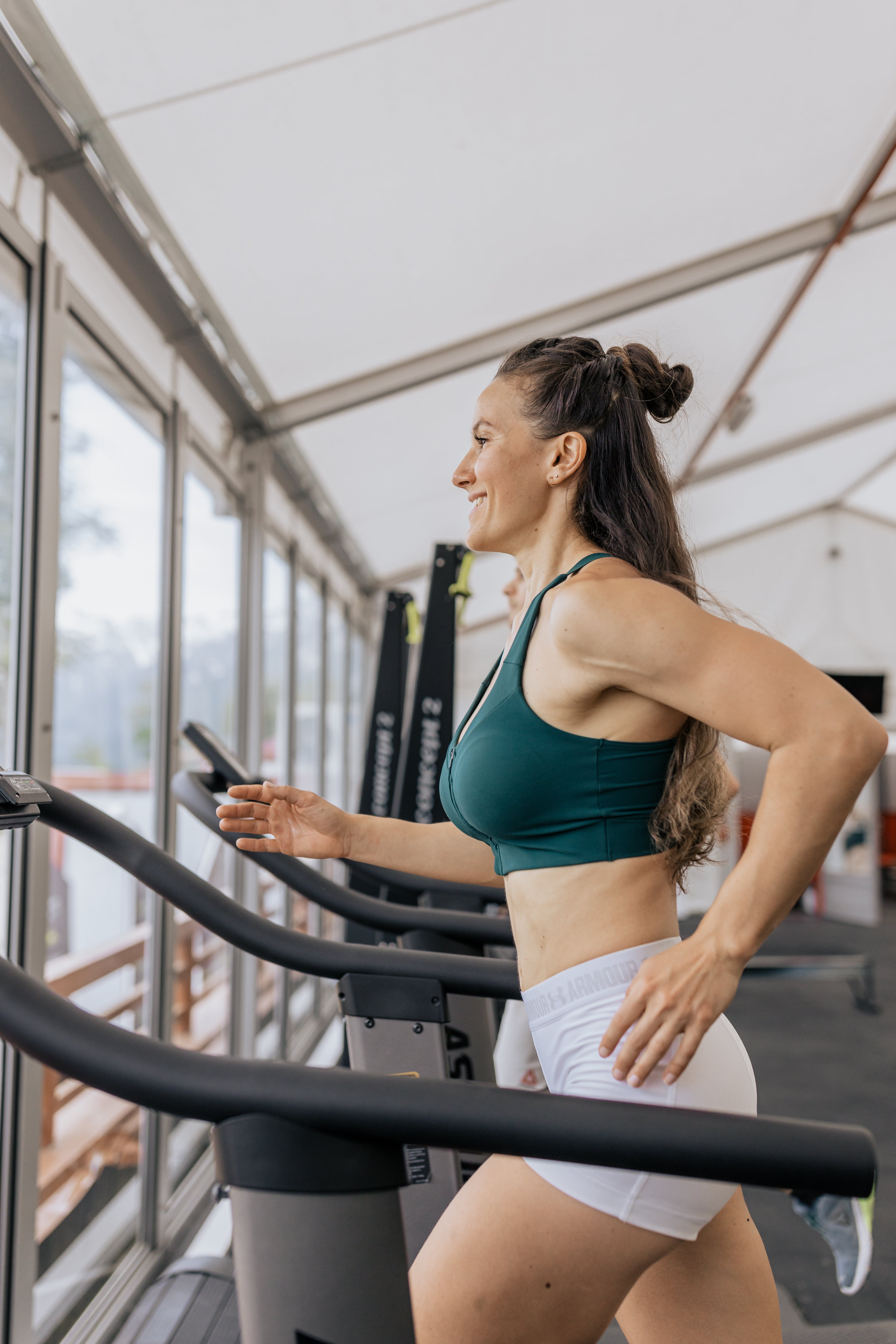Embarking on a fitness journey is a commitment to personal growth and well-being. The foundational step in this adventure is the creation of a fitness profile, which acts as your personal guidepost. In establishing a fitness profile, one draws the blueprint for their fitness regimen, framing their individual aspirations and acknowledging their starting point. This profile becomes the cornerstone of one’s fitness narrative, capturing the baseline from which all progress is charted.
To construct a meaningful fitness profile, it’s crucial to conduct an honest evaluation of your initial fitness level. This includes reflecting on various physical attributes such as flexibility, strength, and aerobic capacity. However, a fitness profile is developed by using both quantitative methods and personal reflection to ensure that each individual’s unique journey is valued and celebrated. It’s about taking pride in where you stand and embarking on a path of self-improvement.
A comprehensive understanding of your current fitness status is imperative for crafting an effective and sustainable exercise regimen. This insight allows you to set realistic goals and custom-tailor a running program that aligns with both your aspirations and current physical condition, setting you up for success. Our platform provides the tools and resources needed to gain this understanding, which is the first bold step toward a healthier and happier life.
As we prepare to delve into the specifics of assessing physical capabilities in the next section of this article, remember that your fitness profile is a living document. It’s designed to evolve as you do, reflecting every milestone and every challenge overcome. It’s not just about running; it’s about running with purpose, with joy, and with an eye toward a future where every step takes you closer to the best version of yourself.
Assessing Physical Capabilities: The Foundation of a Fitness Profile

Discerning your inherent physical abilities marks a pivotal step in forging a fitness profile that’s uniquely yours—one that acknowledges your present level and paves the way for a fulfilling, injury-free experience.
Exercising self-awareness of your body’s potential and constraints is crucial, involving a blend of introspective assessment and expert advice. Initiate this by conducting a basic self-evaluation: ascertain your usual level of physical activity, record any previous injuries, and contemplate on your stamina and resilience in day-to-day activities. Such self-reflection lays the initial groundwork for your personalized fitness panorama.
To achieve an in-depth canvas, a thorough fitness assessment performed by a fitness professional is invaluable. Tests might encompass cardiovascular examinations like VO2 max, pinpointing the peak oxygen intake your body can achieve during physical exertions, along with evaluations of muscle strength, highlighting areas poised for advancement.
Furthermore, analyzing flexibility and body composition are critical facets that complete your fitness profile. While often overshadowed by strength and endurance, flexibility is the foundation that bolsters the efficiency of each movement, and a precise understanding of body composition can inform dietary decisions that power your performance.
Every individual’s fitness account is an intricate depiction of their health metrics, aspirations, and predilections, acting as a navigational tool for their fitness odyssey. With this compass in hand, your running transcends mere movement—it becomes an intentional quest towards holistic health and happiness.
Harnessing Technology: Tools and Apps for Fitness Profiling

With a solid understanding of physical capabilities as a groundwork, integrating technology is the next stride in forging an effective fitness profile. The advent of smartphones and wearable devices has heralded a new era of interactive exercise where every run becomes a fountain of data, honing in on your tailored fitness goals. These gadgets provide not only metrics of your workouts through real-time data tracking and analysis but also insights that weave seamlessly with the next steps in your fitness journey – including nutrition and lifestyle.
Apps developed for fitness go beyond tracking distance and pace; they delve into calories expended and even examine the restorative quality of sleep, integral to running recovery. The precision of a GPS running watch grants runners the foresight to adjust their training regimes, enhancing individual performance. Subsequent to this, personalized coaching and training plans, offered by some applications, evolve with your performance. They are the technological echo to the professional guidance previously mentioned, aiming to elevate your running efficiency without the risk of overtraining.
Community and connectivity have their place in technology’s domain, with social features fostering motivation and belonging in a digital fitness fellowship. Meanwhile, incorporating heart rate monitors into your routine enables training within ideal cardiovascular exertion zones, marrying well with previous assessments of physical strength and cardiovascular health. For meticulous fine-tuning of one’s form, motion sensors and advanced analytics can yield a granular assessment of each stride, preempting injuries and enhancing technique – an invaluable asset as you prepare to consider nutritional choices and lifestyle adjustments in your subsequent fitness profile development.
Accounting for Nutrition and Lifestyle in Your Fitness Profile

As we delve deeper into creating a comprehensive fitness profile, let’s not overlook the integral role of nutrition and lifestyle. Nutrition is pivotal in our fitness equation, akin to selecting the finest fuel for a high-performance machine. A balanced intake of carbohydrates, proteins, and fats tailors our diet to meet our training demands, aids in recovery, and sustains our energy levels. While carbs energize our immediate efforts, proteins are essential for muscle repair, and fats ensure long-term energy reserves. Moreover, it’s crucial to align meal timings with exercise schedules to optimize energy levels and minimize any digestive discomfort. Balancing these elements makes every run not only effective but also thoroughly enjoyable.
Similarly, curating a lifestyle that syncs with our fitness aspirations enhances our progress. Incorporating stress-reducing techniques like mindfulness or meditation boosts mental endurance, complementing the physical vigor running instills. Prioritizing sleep is also paramount for recovery and performance, converting rest days into a period of profound rejuvenation.
Furthermore, proper hydration is essential; it’s the cornerstone of both peak performance and overall physiological function. Embracing good hydration habits is a simple yet effective stride towards a healthier being. With these lifestyle choices integrated into your regimen, you’re not just striving for better run times; you’re cultivating a harmonious balance where fitness is a conduit to joy.
In the next stride of our journey, we will focus on the significance of setting clear objectives in the procession of fitness profiling. Goals are the milestones that will guide us in crafting a fitness narrative that is continuously evolving, much like the nutrition and lifestyle choices we adapt along the way.
The Importance of Setting Goals in Your Fitness Journey
After laying the groundwork through careful consideration of your nutrition and lifestyle, the next cornerstone of building a fitness profile is the art of goal setting. This facet is not merely about reaching a destination; it’s about charting a journey that keeps you motivated and focused. Developing clear, precise goals transforms a fitness routine from sporadic effort into a strategic endeavor, driving you forward with purpose. It’s not merely donning your running shoes; it’s about defining what you’re running toward.
Why set goals? Within the context of a fitness profile, goals act as the cardinal directions on your personal map to success. By determining what accomplishments you seek, your once-vague desires turn into tangible waypoints. These waypoints steer each effort towards a meaningful conclusion. Whether it’s raising your endurance, nailing a personal record, or achieving unwavering consistency, goals render a quantifiable scale to measure your victories, large and small alike.
Moreover, goal setting sharpens your focus. In the flux of daily life, amidst a myriad of distractions, a precisely defined goal anchors your attention. It’s akin to internalizing the voice of a dedicated coach, continuously reminding you of the prize that lies ahead. Maintaining this mental tenacity bolsters both your physical stamina and the resolve needed to push through adversity.
Ultimately, the practice of setting goals should be a dynamic process, adaptable as you progress. Every finish line crossed is an invitation to mark the next. As you forge new capacities, let your ambitions ascend in tandem, ensuring an ever-unfolding path of personal growth—a path that celebrates every accomplishment. As you move towards your next milestones or surge past them, be it shattering personal speed records or discovering the joy inherent in the run itself, setting goals empowers these visions to manifest into reality, one resolute stride at a time.
Analyzing and Adjusting: The Cycle of Fitness Profile Evolution

Forging ahead in your fitness journey, once goals are set, the next vital step is the introspective and iterative process of analyzing and adjusting your fitness profile. This perpetual motion of self-assessment and modification is what shapes a flexible and evolving fitness regimen, turning it into a more personalized health dialogue.
Commencing this ongoing cycle, we delve into the analysis of your current fitness condition. Leveraging a variety of tools – ranging from smartwatches to cutting-edge fitness apps – you can obtain critical information on your cardiovascular fitness, running efficiency, and general well-being. Remember, the raw numbers don’t hold the power; it is your engagement and reflection upon this data that will illuminate your journey. With this analysis in hand, it’s possible to finely tune your exercise program, ensuring it continually aligns with personal aspirations and physiological feedback.
Recognizing and responding to the stages of training adaptation is crucial. When progress appears to stall, it’s a sign to revisit and revise the routine. Modifying workout variables such as intensity, volume, or methodology can rekindle training improvements, propelling you towards your evolving goals. By considering not only the physical but also the psychological and emotional facets of exercise, you can foster a harmonious and fulfilling running experience.
Ultimately, the cycle of fitness profile evolution transcends beyond mere figures. It embodies the acceptance of change, the celebration of personal milestones, and the exploration of new boundaries. No matter if you’re racing to break your fastest record or savoring a tranquil morning jog, your journey is unique, and every step you take is a testament to the allure of running as both a personal challenge and a journey of self-exploration.


